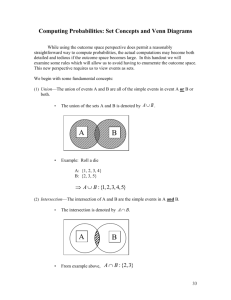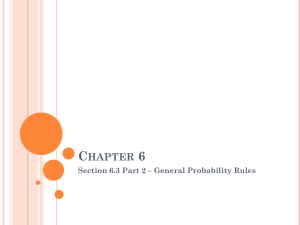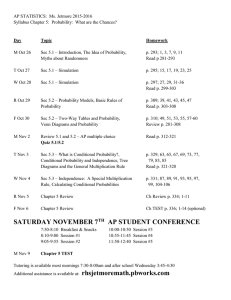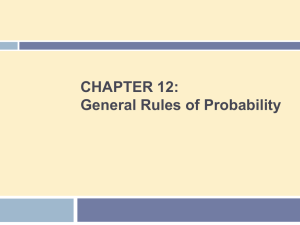Chapter 5 AP Statistics
advertisement
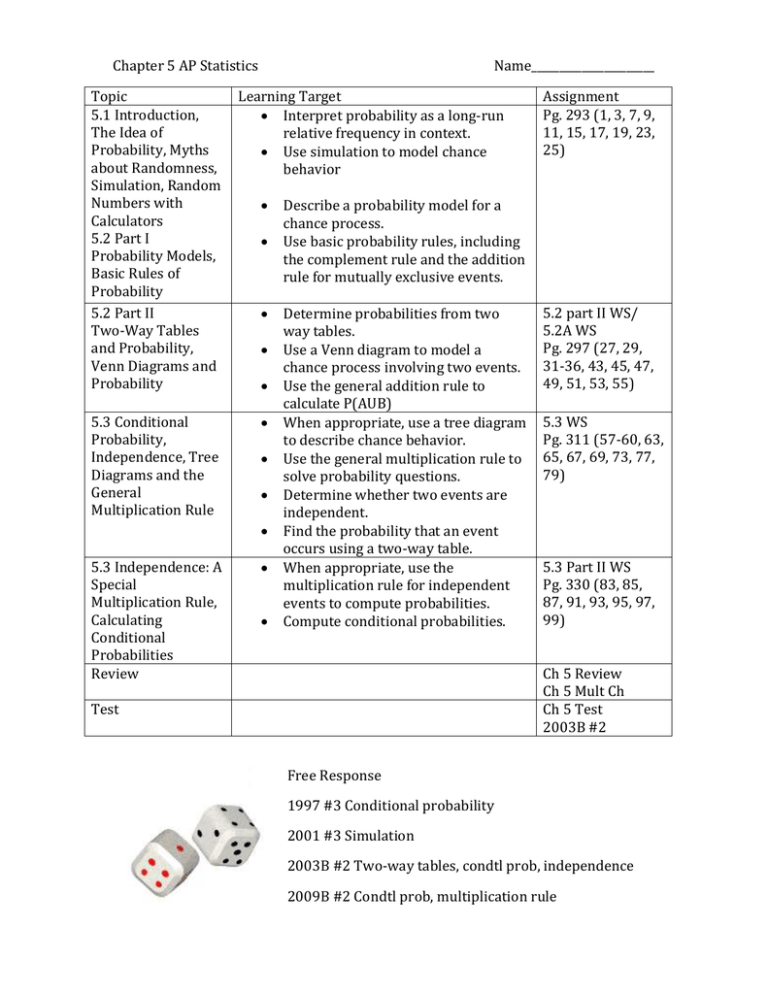
Chapter 5 AP Statistics Topic 5.1 Introduction, The Idea of Probability, Myths about Randomness, Simulation, Random Numbers with Calculators 5.2 Part I Probability Models, Basic Rules of Probability 5.2 Part II Two-Way Tables and Probability, Venn Diagrams and Probability 5.3 Conditional Probability, Independence, Tree Diagrams and the General Multiplication Rule Name______________________ Learning Target Interpret probability as a long-run relative frequency in context. Use simulation to model chance behavior 5.3 Independence: A Special Multiplication Rule, Calculating Conditional Probabilities Review Assignment Pg. 293 (1, 3, 7, 9, 11, 15, 17, 19, 23, 25) Describe a probability model for a chance process. Use basic probability rules, including the complement rule and the addition rule for mutually exclusive events. Determine probabilities from two way tables. Use a Venn diagram to model a chance process involving two events. Use the general addition rule to calculate P(AUB) When appropriate, use a tree diagram to describe chance behavior. Use the general multiplication rule to solve probability questions. Determine whether two events are independent. Find the probability that an event occurs using a two-way table. When appropriate, use the multiplication rule for independent events to compute probabilities. Compute conditional probabilities. 5.2 part II WS/ 5.2A WS Pg. 297 (27, 29, 31-36, 43, 45, 47, 49, 51, 53, 55) 5.3 WS Pg. 311 (57-60, 63, 65, 67, 69, 73, 77, 79) 5.3 Part II WS Pg. 330 (83, 85, 87, 91, 93, 95, 97, 99) Ch 5 Review Ch 5 Mult Ch Ch 5 Test 2003B #2 Test Free Response 1997 #3 Conditional probability 2001 #3 Simulation 2003B #2 Two-way tables, condtl prob, independence 2009B #2 Condtl prob, multiplication rule 5.1 Interpret probability as a long-run relative frequency in context. Use simulation to model chance behavior 5.2 Describe a probability model for a chance process. Use basic probability rules, including the complement rule and the addition rule for mutually exclusive events. Determine probabilities from two way tables Use a Venn diagram to model a chance process involving two events. Use the general addition rule to calculate P(A or B) 5.3 When appropriate, use a tree diagram to describe chance behavior. Use the general multiplication rule P(A and B) to solve probability questions. Determine whether two events are independent. Find the probability that an event occurs using a two-way table. Use the multiplication rule for independent events to compute probabilities. Compute conditional probabilities.


